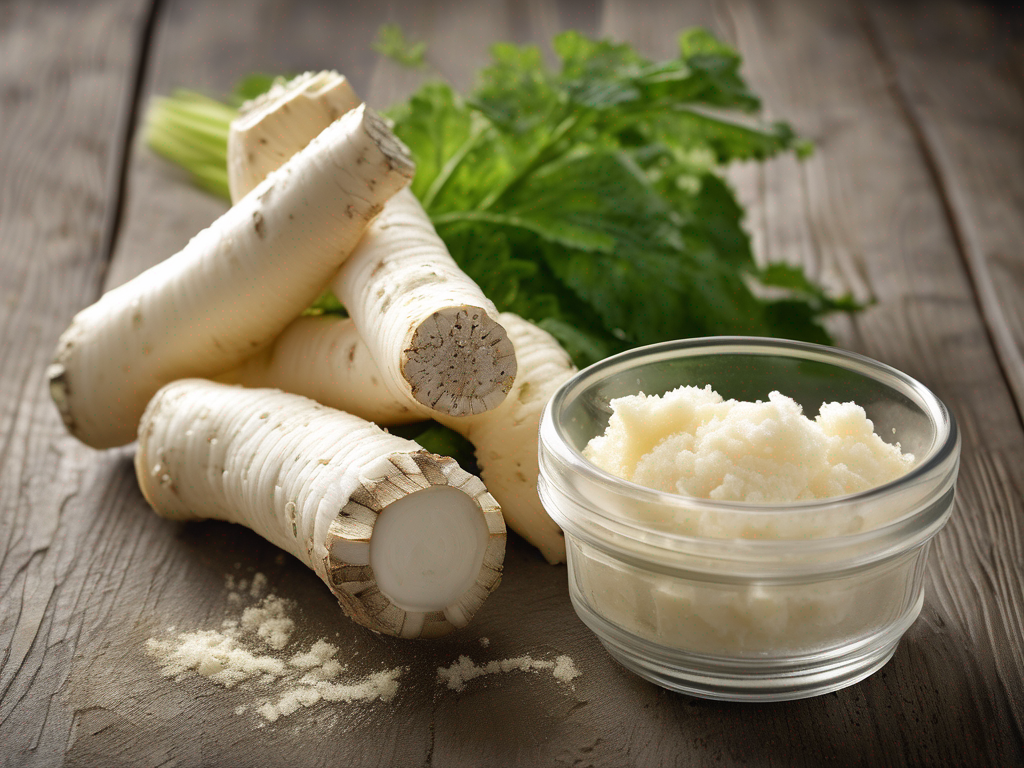
Safely Storing Opened Horseradish Prepared Commercially Bottled Sold Unrefrigerated
Get Your Free Food Safety Cheat Sheet
30 most common foods with instant answers. Print it and stick it on your fridge—completely free!
Safely Storing Opened Horseradish Prepared Commercially Bottled Sold Unrefrigerated
Horseradish is a popular condiment known for its pungent flavor and versatility in various dishes. Whether you enjoy it on sandwiches, in sauces, or as a topping for meats, properly storing opened horseradish is essential to maintain its quality and ensure food safety. In this blog post, we will discuss how you can safely store commercially bottled horseradish that is sold unrefrigerated. (Horseradish)
Understanding Horseradish Storage
When it comes to storing opened horseradish, there are a few key factors to consider:
Temperature
Horseradish that is commercially bottled and sold unrefrigerated should be stored at a consistent temperature to maintain its quality. Avoid exposing the product to extreme temperatures or fluctuations in heat, as this can impact its flavor and shelf life.
Light Exposure
Light can degrade the quality of horseradish over time. Store the opened bottle in a cool, dark place away from direct sunlight to preserve its flavor and freshness.
Air Exposure
Air exposure can also affect the quality of horseradish. Make sure to seal the bottle tightly after each use to prevent air from entering and causing the condiment to spoil.
Contamination
To prevent contamination, always use clean utensils when scooping out horseradish from the bottle. Avoid double-dipping to maintain the product's integrity and prevent the introduction of harmful bacteria.
Tips for Safely Storing Horseradish
To ensure the longevity and safety of your opened horseradish, follow these practical tips:
-
Check the Expiration Date: Before purchasing horseradish, check the expiration date to ensure that you have ample time to consume it before it spoils.
-
Refrigerate After Opening: While commercially bottled horseradish may be sold unrefrigerated, it is best to refrigerate it after opening to extend its shelf life and maintain its quality.
-
Use a Clean Spoon: When serving horseradish, always use a clean spoon to prevent contamination. Avoid using fingers or utensils that have come into contact with other foods.
-
Store in a Cool, Dark Place: If refrigeration is not possible, store the opened horseradish in a cool, dark place such as a pantry or cupboard away from heat sources.
Safety Precautions and Shelf Life
Shelf Life
Opened horseradish can typically last for several months when stored properly. However, it is essential to check for any signs of spoilage, such as discoloration, off odors, or mold growth, before consuming.
Safety Precautions
To ensure food safety when storing horseradish, keep the following precautions in mind:
-
Avoid Cross-Contamination: Store horseradish away from raw meats, seafood, and other potentially hazardous foods to prevent cross-contamination.
-
Follow Hygiene Practices: Wash your hands thoroughly before handling horseradish and ensure that all utensils and surfaces are clean to prevent foodborne illnesses.
-
Discard Spoiled Product: If you notice any signs of spoilage, such as off flavors or unusual textures, discard the horseradish immediately to avoid foodborne illness.
Conclusion
Properly storing opened horseradish prepared commercially bottled and sold unrefrigerated is essential to maintain its quality and safety. By following the tips and guidelines outlined in this blog post, you can enjoy this flavorful condiment while minimizing the risk of foodborne illness. Remember to check the expiration date, refrigerate after opening, and practice good hygiene to ensure the longevity of your horseradish. Stay safe and enjoy your favorite dishes with the added kick of horseradish! (Horseradish)
Authoritative Food Safety References
These agencies and university labs inform every tip and health precaution we publish.
USDA FoodKeeper – Cold Storage Guidelines
Official refrigerator, freezer, and pantry timelines maintained by the U.S. Department of Agriculture.
Visit USDA FoodKeeperFDA Produce Safety Rule & Grower Guidance
Field-to-fridge handling practices that prevent contamination of fruits, vegetables, and leafy greens.
Visit FDA Produce SafetyCDC Foodborne Illness Prevention Hub
Surveillance-backed guidance on pathogens, symptoms, and steps to reduce foodborne illness risk.
Visit CDC Food SafetyUC Davis Postharvest Technology Center
University research detailing optimal storage atmospheres for produce after harvest.
Visit UC Davis PostharvestPenn State Extension – Home Food Preservation & Safety
Peer-reviewed extension bulletins on safe canning, chilling, and reheating practices.
Visit Penn State ExtensionGet Your Free Food Safety Cheat Sheet
30 most common foods with instant answers. Print it and stick it on your fridge—completely free! Want more? Upgrade to the complete guide with 70+ foods.
Scan your food directly and get instant safety info using our AI-powered camera feature.